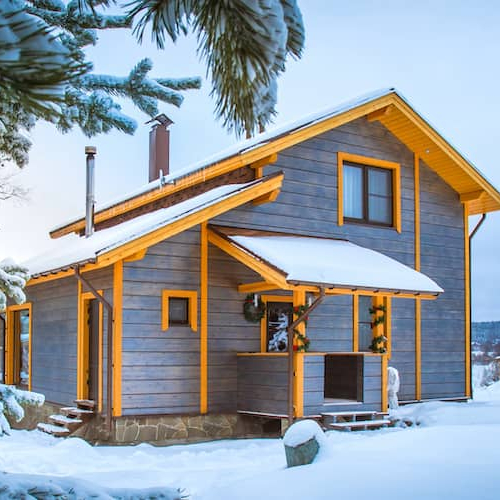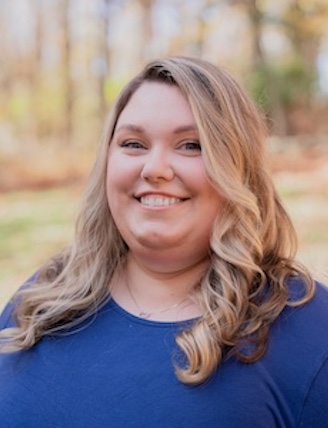Do USDA loans require mortgage insurance?
Oct 24, 2025
•4-minute read

U.S. Department of Agriculture loans help low- to mid-income borrowers buy homes in specific rural areas. One of the advantages of a USDA loan is that it requires no down payment. You also don’t have to pay for private mortgage insurance or mortgage insurance premiums, but you do have to pay a guarantee fee.
While Rocket Mortgage® doesn’t offer USDA loans right now, we want to help you understand all your borrowing options. Whether you’re exploring ways to buy a house with no money down or comparing different loan options, here’s everything you need to know about USDA loans and mortgage insurance.
A quick primer on USDA loans
USDA loans help low- and middle-income Americans buy homes in rural and suburban communities. The USDA guarantees these loans, which encourages lenders to offer them with favorable terms for borrowers.
Most of the United States is eligible for USDA funding. You can use the USDA’s property eligibility map to verify a specific home or area. Major cities and their immediate suburbs aren’t included, but you might be surprised by how many areas qualify.
USDA loans require no down payment. That’s a significant advantage, because even a modest 3% down payment on a $250,000 home means coming up with $7,500 up front. For many families, that can take years to save.
Government-backed loans like USDA and VA loans also offer lower interest rates than conventional or FHA loans, which makes the monthly payment more affordable over the life of your loan.
What is private mortgage insurance, and do USDA loans have PMI?
When you get a loan from the USDA, private mortgage insurance is not required. Instead, you pay an annual guarantee fee, sometimes called a funding fee.
Lenders require PMI when you put down less than 20% on a conventional mortgage. PMI reimburses the lender if you default on your loan. It’s a monthly cost added to your mortgage payment, and you pay it until you’ve built at least 20% equity in your home.
FHA loans charge lenders a mortgage insurance premium instead of PMI. Every FHA borrower pays both an up-front MIP and an annual MIP. If you put down less than 10%, you’ll pay the annual MIP for the entire life of your loan. With a down payment of 10% or higher, you’ll pay the annual MIP for 11 years.
VA loans require no mortgage insurance, but VA borrowers must pay a one-time funding fee. The funding fee can be paid at closing or rolled into the loan amount.
What is the USDA annual guarantee, or funding, fee?
USDA loans require borrowers to pay a guarantee fee, which works like mortgage insurance.
When a government agency backs a loan, such as a USDA or FHA loan, it’s providing insurance for the lender. If the borrower defaults, the agency pays the lender to compensate for its losses. The guarantee fee pays for that insurance.
How does the guarantee fee work?
The USDA guarantee fee comes in two parts that work together: an up-front fee and an annual fee.
Up-front fee
USDA loans require a 1% up-front guarantee fee. This means you’ll pay 1% of the loan amount at closing. Though it’s called an up-front fee, you can roll the cost into your loan balance. Rolling the fee into your balance saves you money at closing, but you’ll likely pay more in interest by adding it to your loan balance.
Annual fee
USDA loans also require borrowers to pay an annual guarantee fee. The annual fee is equal to 0.35% of your loan balance. It’s usually divided into monthly installments and added to your mortgage payment.
Guarantee fee example
Let’s say you’re buying a $250,000 home with no down payment. Your up-front guarantee fee is 1% of the loan amount, or $2,500.
If you choose to roll this cost into your loan rather than pay it out of pocket, the USDA will allow you to get a loan for $252,500 to cover the cost of the home as well as your guarantee fee.
Then comes your annual fee: 0.35% of $252,500 is $883.75. You’ll pay this USDA monthly mortgage insurance fee over the course of the year, so divided by 12 months, your monthly fee will be $73.65.
Which is less expensive: PMI, MIP, or the USDA’s guarantee fee?
The answer to this question isn’t straightforward because it depends on your financial situation, credit score, and loan details. It’s important to look at all your costs before deciding which loan type works best for your budget and goals.
However, let’s look at the typical costs you’ll pay when purchasing a home with various mortgages.
| Loan Type | Upfront Fee | Annual Fee | How long do you pay it? |
|---|---|---|---|
|
USDA |
1% |
0.35% |
Full loan term |
|
FHA |
1.75% |
0.15 – 0.75% |
11 years with a down payment of at least 10%, full loan term with less than 10% down. |
|
Conventional |
N/A |
0.1 – 2% |
Until you have about 20% home equity. |
|
VA |
1.25% – 3.3% |
N/A |
N/A |
The exact cost of PMI on conventional loans can vary depending on a variety of factors, including your credit score and loan-to-value ratio. PMI rates are typically 0.1% – 2% of the loan amount each year.
For FHA and VA loans, your exact mortgage insurance or funding fee costs will depend on certain aspects of your loan, such as the size of your down payment and, in the case of VA loans, whether you’ve used the program before.
Do I have to pay the guarantee fee if I’m refinancing?
Yes. Whether you’re purchasing a home or refinancing with a USDA loan, you’ll pay a 1% up-front guarantee fee and a 0.35% annual fee.
The bottom line: USDA loans require a guarantee fee, not mortgage insurance
USDA loans do come with guarantee fees, but they’re still one of the most affordable paths to homeownership for buyers in eligible areas. The ability to purchase a home with no down payment and competitive interest rates can make the difference between renting for years while saving for a down payment and buying your own home much sooner.
The mortgage landscape can feel overwhelming, but you don’t have to figure it out by yourself. Speaking with a Rocket Mortgage loan expert can help you compare all available programs so you can make the choice that sets you up for long-term success.

Sam Hawrylack
Samantha is a full-time personal finance and real estate writer with 5 years of experience. She has a Bachelor of Science in Finance and an MBA from West Chester University of Pennsylvania. She writes for publications like Rocket Mortgage, Bigger Pockets, Quicken Loans, Angi, Well Kept Wallet, Crediful, Clever Girl Finance, AllCards, InvestingAnswers, and many more.
Related resources
6-minute read
A complete guide to short-term mortgages
Want to be mortgage-free sooner? Discover how short-term home loans can help you save thousands and pay off your home faster.
Read more
6-minute read
Proprietary reverse mortgage: What to know
Private lenders help owners of high-value homes borrow more of their equity with proprietary reverse mortgages. Learn who can get one and how they work.
Read more
12-minute read
How to get a loan to purchase land
Land loans are used to finance the purchase of a plot of land. However, securing this financing is different from other loans. Here’s what you should know...
Read more